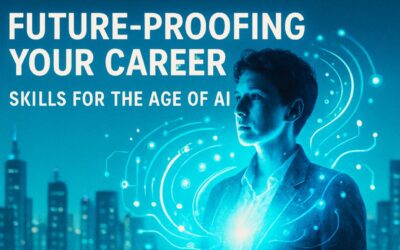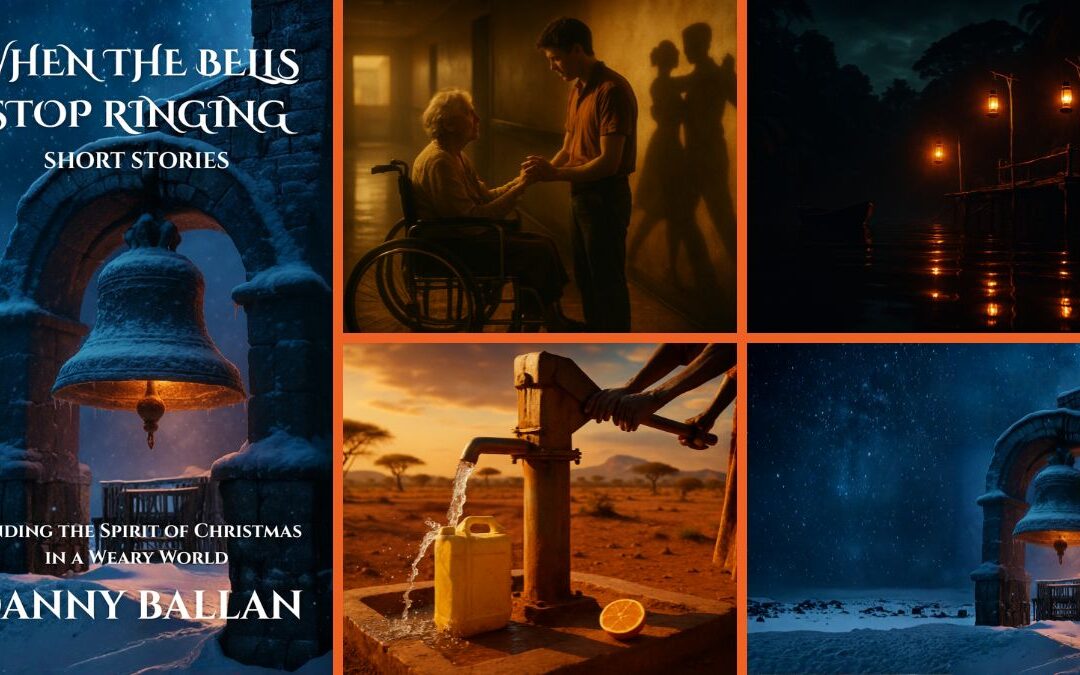Audio Article
For most of human history, our senses were our arbiters of truth. To see something with our own eyes or hear it with our own ears was to know it. “Seeing is believing” wasn’t just a folksy proverb; it was the bedrock of our understanding of reality. Photographs and recordings were treated as unimpeachable evidence, a direct window onto a moment in time. But what happens when that window can no longer be trusted? What happens when it can be manipulated, fabricated, and faked with such fidelity that the human eye can no longer tell the difference between what is real and what is a lie?
This isn’t a thought experiment from a Philip K. Dick novel. This is the world we are now entering. The rapid advancement of generative artificial intelligence has given us the power to create “deepfakes”—hyper-realistic but entirely synthetic text, images, audio, and video. We can now conjure a photograph of an event that never happened, generate a flawless audio clip of a world leader saying something they never said, or create a video of a celebrity endorsing a product they’ve never heard of.
This technological leap has plunged us into what philosophers call an epistemic crisis—a crisis of knowing. When the very evidence of our senses becomes suspect, the foundations of our shared reality begin to crumble. This crisis isn’t just about spotting a clumsy photoshop; it’s a profound challenge to journalism, politics, our legal systems, and even our personal relationships. If any image, video, or quote can be faked, how can we agree on a common set of facts? How can we hold leaders accountable? How can we trust anything we see online? The old adage is dead. Seeing is no longer believing. The new challenge is to learn how to believe again, not with naive faith, but with critical, discerning, and empowered judgment.
The Corrosive Power of Synthetic Reality
The implications of a world saturated with high-fidelity fakes are not merely academic. The corrosive effects are already beginning to ripple through our society, threatening the very pillars of a functional democracy.
Journalism Under Siege: The Death of the Eyewitness
For journalists, a photograph or a video clip has long been a cornerstone of evidentiary reporting. It was the proof that an event occurred, a way to cut through the spin and show the public the unvarnished truth. But in a world rife with deepfakes, this bedrock is turning to quicksand. Newsrooms are now forced to treat every piece of user-generated content not as potential evidence, but as a potential fabrication that must be painstakingly debunked. This slows down the news cycle and seeds public doubt.
Worse, it gives malicious actors a powerful new weapon: the liar’s dividend. This is the phenomenon where, because it’s possible for a video or audio clip to be fake, a person can dismiss real evidence of their wrongdoing as a “deepfake.” A politician caught on tape saying something incriminating can simply claim the recording is a sophisticated fabrication designed to smear them. This erodes accountability and creates a fog of uncertainty where the truth becomes just another opinion, indistinguishable from the firehose of falsehoods.
Politics and the Poisoning of the Well
In the political arena, the potential for chaos is immense. Imagine a deepfake video of a presidential candidate admitting to a crime released the day before an election. Even if it’s debunked hours later, the damage will have been done. The emotional impact of the initial video will linger, and the seed of doubt will have been planted in millions of minds.
This technology is the ultimate tool for purveyors of disinformation. It can be used to incite violence, destabilize markets, and turn citizens against one another. It exploits a fundamental weakness in our cognitive wiring: we are emotionally wired to react first and think later. A shocking video bypasses our rational brain and hits us straight in the gut. By the time our critical faculties catch up, the lie is already halfway around the world. The goal of this kind of information warfare isn’t necessarily to make you believe the fake thing; it’s to exhaust your critical thinking and make you distrust everything, leading to apathy and cynicism.
Your Cognitive Toolkit: A Guide to Modern Media Literacy
The epistemic crisis can feel overwhelming, like an unstoppable technological tsunami. But we are not helpless. We cannot stop the tide of synthetic media, but we can learn to navigate the waters. This requires a fundamental upgrade to our media literacy skills. It’s about cultivating a new kind of mindful skepticism and equipping ourselves with a practical toolkit for separating fact from fiction.
The First Line of Defense: Source Verification
Before you even begin to analyze a piece of content, the first and most important question you must ask is: “Where did this come from?” In our hyper-partisan, algorithmically-driven media landscape, not all sources are created equal. Learning to distinguish credible sources from dubious ones is the foundation of digital literacy.
- Check the Messenger: Who is sharing this information? Is it a reputable news organization with a history of journalistic standards and corrections policies (like the Associated Press, Reuters, BBC, etc.)? Or is it a hyper-partisan blog, a nameless account on social media, or a website you’ve never heard of? Be wary of sources with a clear agenda or a sensationalist tone.
- Look for Corroboration: This is the golden rule of journalism. Has any other credible news source reported the same story? If a shocking story is breaking, every major news outlet in the world will be scrambling to confirm and report it. If the only place you can find the information is on one obscure website, that is a massive red flag. Cross-reference the information across multiple, ideologically diverse sources to get a more complete picture.
- Practice “Lateral Reading”: When you encounter a new source, don’t just read what it says about itself on its “About Us” page. Open new tabs and read what other, trusted sources say about it. A quick search can reveal if a source has a history of publishing misinformation or if it’s a known propaganda outlet.
Amateur Sleuthing: Basic Digital Forensics
While deepfake technology is getting scarily good, it’s not yet perfect. Often, AI-generated content contains subtle tell-tale signs that can be spotted by a discerning eye. You don’t need to be a computer scientist to perform some basic digital forensics.
- The Uncanny Valley of Images: Look for the small, unnatural details. AI image generators still struggle with hands—you’ll often see images with people who have six fingers or fingers that bend in impossible ways. Look at backgrounds. Are there strange, melted-looking objects? Does text on signs or in books look like gibberish? Are there inconsistencies in lighting and shadows? Do reflections look correct? Also, look at features like teeth and ears. Sometimes AI will generate teeth that are too perfectly uniform or earrings that don’t match.
- Audio and Video Inconsistencies: For video, watch the person’s blinking patterns. Real humans blink at a regular rate; some early deepfakes had subjects who didn’t blink at all or blinked erratically. Listen for unnatural-sounding audio—a lack of background noise, a monotonous tone, or strange breathing patterns can be clues.
- Check the Metadata: While it can be stripped, sometimes an image or video file still contains its metadata—the digital fingerprint that contains information about what device created it and when. Tools like online metadata viewers can sometimes reveal if a file has been manipulated by a known AI program.
It’s important to note that as technology improves, these “tells” will become harder to spot. This is why forensics is only one part of the toolkit and must be combined with source verification and critical thinking.
The Ultimate Weapon: Your Critical Mind
The most powerful tool you have in the fight against misinformation is your own brain. Technology can be fooled, but a well-honed critical mind is much more resilient. This means shifting from being a passive consumer of information to an active, questioning participant.
- Question Your Emotions: This is perhaps the most important strategy of all. Misinformation is designed to provoke a strong emotional response: outrage, fear, anger, or vindication. These emotions are the enemies of critical thought. When you see a post or a headline that makes your blood boil or makes you feel instantly validated, that is the precise moment you should be most skeptical. Pause. Take a breath. Ask yourself: “Is this content designed to make me think, or is it designed to make me feel? Is someone trying to manipulate my emotions to get me to share this without thinking?”
- Embrace Uncertainty: In a healthy information ecosystem, it’s okay not to have an immediate opinion. It’s okay to say, “I don’t know enough about this yet to be sure.” Resist the pressure to have an instant hot take on every issue. The rush to judgment is a vulnerability that purveyors of falsehoods love to exploit. Give yourself permission to wait for more information to emerge from credible sources.
- Be Aware of Your Own Biases: We all have confirmation bias—the tendency to favor information that confirms our existing beliefs. Malicious actors know this and will create content specifically designed to appeal to your preconceived notions. Actively seek out perspectives that challenge your own. Read sources from outside your political tribe. If you truly want to understand an issue, you must understand the strongest arguments of those who disagree with you.
Navigating the epistemic crisis is not about finding a magic tool that will tell you what’s true. It’s about cultivating a new set of habits and a new mindset. It’s about accepting that the world of information is now a more treacherous landscape and that we all have a personal responsibility to be better navigators. The future of our shared reality may very well depend on it.
MagTalk Discussion
Focus on Language
Vocabulary and Speaking
Let’s talk about some of the language from that article. When you’re dealing with a topic as complex as the “epistemic crisis,” the vocabulary can sound a little academic. But if we break it down, these words are actually fantastic tools for talking about truth, lies, and information in our everyday lives. Let’s start with that big phrase itself: epistemic crisis. Okay, let’s be honest, you’re probably not going to drop the word epistemic in a casual conversation at a coffee shop. It’s a philosophical term relating to knowledge or the degree of its validation. But the idea behind it is super relevant. A crisis of knowing. You can talk about this concept without using the fancy word. For instance, you could say, “With all these deepfakes, we’re heading into a real crisis of knowing what’s true anymore.” The core idea is what matters.
However, a word from the article that is incredibly useful is unimpeachable. We said that photographs were once seen as unimpeachable evidence. If something is unimpeachable, it is entirely trustworthy and not able to be criticized or doubted. It’s beyond reproach. Think of a witness in a trial whose character and story are so perfect that no one can question their testimony. Their credibility is unimpeachable. You could say, “She has a reputation for unimpeachable integrity; everyone trusts her.” Or, “The report was based on unimpeachable data from multiple sources.” It’s a very strong word for describing something that is absolutely solid and reliable.
Let’s look at the word corrosive. We talked about the corrosive power of synthetic reality. Something that is corrosive has the effect of gradually damaging or destroying something. Literally, acid is corrosive to metal. Metaphorically, we use it to talk about things that slowly eat away at trust, relationships, or society. For example, “Constant criticism can have a corrosive effect on a person’s self-confidence.” Or, “Gossip and rumors are corrosive to a healthy work environment.” It’s a great word because it captures that sense of slow, steady destruction.
Another powerful word is purveyors. The article mentioned the purveyors of disinformation. A purveyor is a person or group that spreads or sells a particular idea or product. It’s often used with a slightly negative connotation, as if the person is spreading something undesirable. You can have a purveyor of fine wines, which is neutral, but more often you hear it used like “a purveyor of lies” or “a purveyor of conspiracy theories.” It’s a more formal and critical way of saying “spreader” or “supplier.” You might say, “Be careful of online gurus who are often just purveyors of simplistic self-help advice.”
Now for a word that describes the content itself: dubious. We talked about distinguishing credible sources from dubious ones. If something is dubious, it is hesitating or doubting; not to be relied upon; suspect. A dubious claim is one that you should probably not believe. A dubious character is someone you probably shouldn’t trust. For example, “He gave me a dubious excuse for being late, and I’m not sure I believe him.” Or, “The investment opportunity sounded too good to be true, so I was naturally dubious.” It’s a perfect word for expressing skepticism.
Let’s look at the verb debunk. We mentioned that newsrooms have to spend time debunking potential fakes. To debunk something is to expose the falseness or hollowness of a myth, idea, or belief. It’s the act of showing that something people thought was true is actually false. The TV show MythBusters was all about debunking popular myths. You could say, “The scientist’s new research completely debunks the old theory.” Or, “She wrote an article to debunk the rumor that the company was going bankrupt.” It’s an active, powerful word for fighting misinformation.
Another key idea was corroboration. The article stressed the need for corroboration. To corroborate a story is to confirm or give support to it with evidence or testimony. If you tell your boss you were sick, and your doctor provides a note, the doctor’s note corroborates your story. It’s about having multiple sources that all say the same thing. A journalist will never run a story from a single anonymous source without finding corroboration. You might use it in a more personal context: “My friend said he saw a coyote in the park, and then my neighbor corroborated his story because she saw it too.”
Let’s talk about apathy and cynicism. We said the goal of information warfare is often to create apathy and cynicism. Apathy is a lack of interest, enthusiasm, or concern. It’s that feeling of “I don’t care.” Political apathy is when people don’t care enough to vote. Cynicism is an inclination to believe that people are motivated purely by self-interest; it’s a general distrust of others’ sincerity or integrity. A cynic is someone who thinks everyone is secretly selfish. The two often go together. If you’re constantly bombarded with lies, you might become cynical about the possibility of ever knowing the truth, which can lead to apathy—you just give up caring. You might say, “The constant political scandals have led to widespread cynicism and voter apathy.”
Finally, let’s look at preconceived. We talked about our bias toward information that confirms our preconceived notions. A preconceived idea is one that is formed before you have evidence for its truth or usefulness. It’s a belief you have in your head before you even look at the facts. It’s closely related to prejudice. For example, “It’s important to go into a negotiation without any preconceived ideas about what the other person wants.” Or, “She challenged the audience to let go of their preconceived notions about modern art.” It’s a great way to talk about the biases we all carry with us.
So we have this great toolkit: unimpeachable, corrosive, purveyors, dubious, debunk, corroboration, apathy, cynicism, and preconceived. How can we use these to be more persuasive and critical speakers? A crucial skill in today’s world is the ability to respectfully challenge an idea or a piece of information. You don’t want to be aggressive, but you also don’t want to be passive. You want to be a critical thinker.
Let’s imagine a friend shares a shocking article with you from a website you’ve never heard of. Instead of just saying “That’s fake,” you could use some of our language to open a more productive conversation. You could say: “Wow, that’s a pretty wild claim. I have to admit, I’m a bit dubious about the source. Have you seen any corroboration for this story from more established news outlets? I’m just worried about all the purveyors of misinformation out there. I think it’s easy to fall for things that confirm our preconceived notions. This kind of stuff can be so corrosive to our ability to agree on facts, and I don’t want to fall into apathy or cynicism.”
See what that does? You haven’t attacked your friend. You’ve positioned yourself as a fellow traveler in this confusing world, worried about the same things they are (or should be). You’ve used precise language to explain why you’re skeptical. This approach invites a conversation rather than starting a fight.
Here is your speaking challenge. Find an article or a social media post online that you think is a bit dubious. Your task is to prepare a short, 60-second response explaining your skepticism. Your goal is not to be aggressive, but to be a model of critical thinking. Try to use at least three of the vocabulary words we’ve discussed. Start by acknowledging the claim, then express your doubt, and explain why you think it’s important to be careful. For example, you could start with, “I saw that post too, and while it’s interesting, I’m a bit dubious…” This practice will help you become more comfortable and articulate (a word from our last lesson!) in questioning information in a constructive way.
Grammar and Writing
Welcome to the writing section. The topic we’ve been discussing, the epistemic crisis, is all about the challenge of finding truth in a sea of potential falsehoods. For today’s writing challenge, we’re going to put you in the role of a truth-seeker. You’ll be tasked with analyzing a piece of media and arguing for its credibility, or lack thereof. This will require a sharp analytical eye and a command of the language of evidence, analysis, and skepticism.
The Writing Challenge
Here is your writing prompt:
Find a recent piece of controversial media online—this could be a viral video, a striking photograph from a newsworthy event, a widely shared quote attributed to a public figure, or an article from a non-mainstream source. Write a short analytical essay (500-700 words) in which you act as a fact-checker. Your essay must:
- Clearly introduce the piece of media and the claim it purports to make.
- Systematically analyze the evidence for and against its authenticity and credibility using the principles discussed in the article (e.g., source verification, digital forensics, critical thinking).
- Use language of analysis, evidence, and modality to express your level of certainty.
- Conclude with your overall judgment: Is this piece of media likely credible, likely fabricated/misleading, or is there not enough information to be certain?
This is an exercise in critical analysis and persuasive writing. Your opinion doesn’t matter as much as the quality of your evidence and the logic of your reasoning. You are a detective laying out the case for your reader.
Let’s arm you with the grammatical and stylistic tools you’ll need to be an effective written analyst.
Tip 1: The Language of Evidence and Citation
A fact-checker’s argument is only as strong as their evidence. When you make a claim, you must support it by referring to your sources. In writing, this requires specific phrasing to introduce and contextualize your evidence.
- Instead of: “I checked the source. It’s a biased website.”
- Use: “According to the media watchdog organization NewsGuard, the website in question has a history of publishing politically biased content.”
- Instead of: “The video looks fake.”
- Use: “Analysis of the video reveals several key inconsistencies, such as the unnatural flickering around the subject’s head.”
Grammar Deep Dive: Phrases for Citing Evidence
Build a toolbox of phrases to introduce your evidence smoothly.
- Referring to a Source: According to [Source]…, As reported by [Source]…, [Source] notes that…, In a statement released by [Source]…
- Referring to Your Own Analysis: Close examination of the image shows…, Analysis of the metadata reveals…, The video displays several tell-tale signs of manipulation, including…, A key inconsistency is…
- Quoting: The article claims, quote, “…”, The subject is quoted as saying…
Using these phrases signals to your reader that you are not just stating opinions, but are grounding your analysis in specific, verifiable details.
Tip 2: Mastering Modality to Express Certainty
You are not a wizard; you cannot know with 100% certainty that a video is a deepfake unless you have definitive proof. A good analyst expresses their conclusions with a degree of certainty that matches the strength of their evidence. This is called modality. Using modal verbs and adverbs allows you to be precise about your level of confidence.
- High Certainty (you have strong evidence):
- “The lack of any corroborating reports from major news outlets strongly suggests that the story is false.”
- “Given the six-fingered hand in the image, it is almost certainly AI-generated.”
- Medium Certainty (you have some evidence, but it’s not conclusive):
- “The subject’s unusual blinking pattern could indicate that the video is a deepfake.”
- “This phrasing seems uncharacteristic of the politician, suggesting the quote may be fabricated.”
- Low Certainty (you are speculating based on weak evidence):
- “It’s possible that the image was simply taken from a strange angle.”
- “While there are no obvious signs of forgery, the anonymous source might be unreliable.”
Grammar Deep Dive: Verbs, Adverbs, and Adjectives of Modality
- Modal Verbs: must, will, should (high certainty); may, might, could (low/medium certainty)
- Modal Adverbs: certainly, definitely, undoubtedly (high); probably, likely (medium); possibly, perhaps (low)
- Modal Adjectives: certain, definite (high); probable, likely (medium); possible (low)
- Verbs of Analysis: suggests, indicates, implies, appears, seems, tends to show
Vary your use of these words throughout your essay to reflect the nuances of your investigation. Avoid absolute statements like “This is a fake” unless you have unimpeachable proof.
Tip 3: Structuring Your Analysis with Rhetorical Questions
A great way to guide your reader through your analytical process is to structure your paragraphs around questions. This mimics the natural process of inquiry and makes your writing more engaging. You are essentially thinking out loud with your reader.
Imagine you’re analyzing a suspicious photo. You could structure your body paragraphs like this:
- Paragraph 1: The Source. “The first and most crucial question is: where did this photograph originate? The image was first posted by an anonymous account on X (formerly Twitter), which was created only last week. This immediately raises red flags regarding the source’s credibility…”
- Paragraph 2: Corroboration. “Next, we must ask if any other sources can corroborate this image. A reverse image search reveals that the photo appears on no credible news sites. Furthermore, journalists on the ground at the alleged event have not shared any similar images…”
- Paragraph 3: The Content Itself. “Finally, does the content of the photo withstand scrutiny? While at first glance it seems convincing, a closer look reveals several tell-tale signs of AI generation. For instance, the text on the banner in the background appears to be indecipherable gibberish…”
This question-based structure makes your analysis feel like a journey of discovery. It’s logical, easy to follow, and highly effective for laying out your case step-by-step.
By grounding your claims in evidence, using nuanced language of certainty, and structuring your analysis logically, you can write a powerful essay that doesn’t just give an opinion, but demonstrates the process of critical thinking in action.
Vocabulary Quiz
Let’s Discuss
The article mentions the “liar’s dividend.” Can you think of any real-world examples where a public figure has tried to dismiss real evidence by claiming it was fake?
Discuss how this tactic works to confuse the public. Does it matter if the denial is believable? Or is the goal just to create enough uncertainty and “muddy the waters” so that people don’t know what to believe? Explore the long-term impact of this on our trust in evidence and accountability.
Of the three strategies discussed (Source Verification, Digital Forensics, Critical Thinking), which do you think is the most important for the average person to master? Why?
Make a case for one over the others. You could argue for Source Verification as the simplest and most effective first line of defense. You could argue for Digital Forensics, as technology gives us new tools to fight back. Or you could argue for Critical Thinking, as it’s the underlying mindset that powers the other two. Discuss how these three strategies can and should work together.
The article suggests that content designed to trigger a strong emotional response should be treated with immediate skepticism. Why is this so difficult to do in practice?
Think about the psychology of sharing information online. We often share things to signal our identity and our membership in a group. Discuss how our emotions and our desire to belong can override our rational, critical thinking. Share personal experiences where you felt a strong urge to share something out of anger or validation before you had a chance to verify it.
Should there be laws or regulations governing the creation and distribution of deepfakes? What would be the pros and cons of such laws?
Explore the complex balance between freedom of speech and preventing harm. A pro would be curbing the spread of malicious disinformation. A con would be the potential for censorship or stifling artistic expression (as deepfake technology can also be used for parody and art). Discuss where you would draw the line. Should it be illegal to create a deepfake of a politician? What about a celebrity? What if it’s clearly labeled as satire?
How does the epistemic crisis affect our personal lives and relationships, beyond just politics and news?
Consider the role of trust in our daily interactions. Could this technology be used for personal revenge, blackmail, or to create fake evidence in a custody battle? Discuss how our relationships might change in a world where you can’t necessarily trust a voicemail from a friend or a photo sent by a family member. What new social norms might we need to develop to cope with this?
Learn with AI
Disclaimer:
Because we believe in the importance of using AI and all other technological advances in our learning journey, we have decided to add a section called Learn with AI to add yet another perspective to our learning and see if we can learn a thing or two from AI. We mainly use Open AI, but sometimes we try other models as well. We asked AI to read what we said so far about this topic and tell us, as an expert, about other things or perspectives we might have missed and this is what we got in response.
Hello there. It’s a pleasure to step in for a moment. The article does a superb job of outlining the crisis and providing a solid, practical toolkit for individuals. This focus on personal empowerment is absolutely critical. However, I want to add a layer to this conversation that looks beyond individual action and towards systemic and technological solutions, because frankly, we can’t just expect every citizen to become a forensic expert to survive the modern information age.
First, let’s talk about the concept of “technological countermeasures.” While the article touched on looking for flaws in fakes, a much bigger battle is happening behind the scenes to create technologies that can automatically detect or authenticate media. One of the most promising areas is in digital watermarking and content provenance. The idea of “provenance” is simple: it’s a record of where something came from. Companies and research groups are developing systems where, for example, a camera manufactured by a trusted company could automatically embed an invisible, cryptographically secure signature into every photo it takes. A news organization could then verify this signature to prove that the photo is authentic and hasn’t been tampered with since it was taken.
This is the goal of groups like the Coalition for Content Provenance and Authenticity (C2PA), which includes major players like Adobe, Microsoft, and the BBC. They are working to create a technical standard for certifying the source and history of media content. Think of it like a digital “chain of custody” for information. In this future, when you see a photo, your browser might show a little green checkmark that says “Verified Origin: Associated Press Camera #7.” This doesn’t solve the problem of a real photo being used in a misleading context, but it’s a massive step forward in combating outright fabrications.
The second area I want to highlight is the role of “platform responsibility.” The article places the onus on the consumer of information, but the giant social media and technology platforms where this content is distributed have an enormous role and responsibility. We are moving beyond the simple debate of whether they should “censor” content. The new, more nuanced conversation is about architectural changes that can build a healthier ecosystem.
For example, what if platforms changed their algorithms to de-prioritize outrage and prioritize credibility? Instead of an algorithm designed to maximize “engagement” at all costs, what if it was designed to show users more content from sources that have been verified by independent fact-checkers? What if they implemented “friction”? For instance, before you can share an article that has been flagged as potential misinformation, you have to click through a warning and wait ten seconds—a small delay designed to make you pause and think before you react emotionally. These aren’t censorship; they are design choices that can nudge millions of users towards more mindful information consumption.
The fight against the epistemic crisis cannot be won by individuals alone. It will require a three-pronged attack: empowered, literate citizens (which the article focused on), technological solutions like provenance standards, and responsible platform architecture. We need all three working in concert to rebuild the foundations of trust in our digital world.










0 Comments